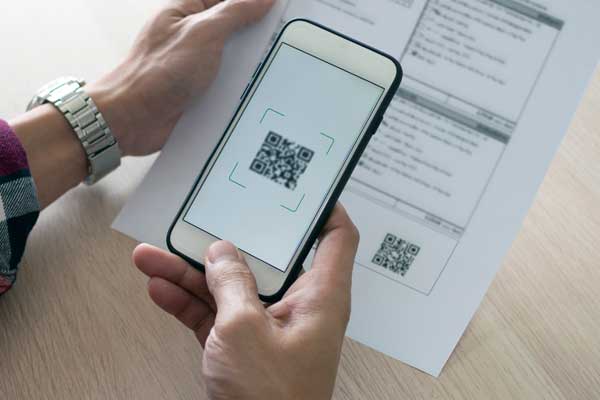Since the COVID-19 pandemic hit, we have been forced into a world of change. Almost every aspect of our lives has had to be adapted in some way in order to keep ourselves and our communities safe. One area in particular that’s been highly affected is the way we communicate with one another.
As social distancing, wearing masks and home working has become the norm, we’ve had to find substitutes for the in-person gestures and facial expressions that we previously relied upon to relay information in our everyday lives.
Organisations across the world have had to adapt too, with the removal of face-to-face meetings and differing ways to manage sales opportunities, many businesses have had to reassess the methods of communication that they use in order to engage with their customers and ensure optimal efficiency and continued growth of their sales pipeline.
It’s without a doubt that technology was a vital factor in ensuring that organisations were able to continue operating throughout the recent COVID-19 pandemic. From digital calls, videos, emails, webchat, online meetings and conferences, digital communication methods really came into their own, with companies accelerating the adoption of many of these systems in order to stay relevant and accessible.
Demonstrating just how much the world relied on technology to stay connected during the pandemic was Zoom’s 2021 revenue report, which is expected to see a £500m increase in comparison to 2020 (Richer, 2021), through the rapid uptake in the use of such systems.
But it hasn’t all been plain sailing. Research has also shown that ‘the less in-person contact we have, the more we become suspicious of other people’ (BBC future, 2020), meaning that it’s more difficult for businesses to get their message out in a positive way.
The recent surge in digital scams accelerated by COVID-19 and the presence of a captive audience caused by lockdowns has also led to an increase in channel fog and fatigue, which has had a detrimental impact on business sales and pipeline opportunities.
Channel Fog. The uncertainty consumers have surrounding the task of determining which communication channels to use in today’s multichannel world. Concerns about the security of personal data, near-constant media reports of fraud and identity theft, and personal experience with digital channels being hacked are the primary contributors to channel fog.
Channel Fatigue. Refers to the mounting difficulty associated with managing massive amounts of digital data from an ever-widening pool of consumer and business information. This fatigue is driven by the overwhelming amount of communications that can come from a single channel, as well as the day-to-day maintenance of multiple accounts and passwords.
Organisations are beginning to understand the importance of utilising communication preferences in order to strengthen relationships and establish an element of trust. Key Point Intelligence (2021) found that 'Businesses that ignored customer preferences about how they wanted to be communicated with saw a decline in loyalty and increased attrition. Mounting channel fog and fatigue have only contributed to these trends'.
So how do organisations counteract these concepts so that audiences are moved through the sales journey by a series of meaningful communication touch points?
With technology causing so much fatigue, confusion and untrustworthiness, many companies have had to look at more trustworthy ways to communicate with their customers to start or end the sales journey. One such method is postal communications, which many organisations are now re-adopting or utilising more often to stand out from competitors.
Physical post is seen to be more reliable with the information it provides and is perceived to have more value than a digital communication, for many, a tangible letter evokes trust and importance. Companies sending a physical piece of mail are seen to have taken more time and put more thought into their communications and this reflects well on the brand and response rates.
Moreover, a Market Reach study (2021) showed that 40% of people agreed that being in lockdown made them realise how important receiving letters was and 88% of people paid the same or more attention to the mail they received during lockdown. Proving that physical forms of communication continue to play a critical role in driving audience engagement and increasing sales opportunities.
However much like digital fatigue and channel fog, this can occur across other forms of communication like post and organisations need to be mindful of this – it’s all about getting the balance right between the on and offline worlds.
Ultimately, the best approach to drive responses with your different audiences, is finding the perfect blend of print and digital communications.
By bringing together the ideal mix of on and offline communications, including SMS, postal communications, emails, the store experience or bespoke landing pages, organisations are able to disrupt the concept of digital fatigue and channel fog, by driving sales through a multitude of communication touch points.
Whilst digital technologies have accelerated the use of digital communications, they have also been used to improve physical touch as well, for example the use of hybrid mail to send postal communications and video technology at store entrances.
The development of these technologies has led to many organisations utilising offline touch points to begin or complete the sales journey, with digital communications reinforcing this through the different stages – it’s all about using the technology available to deliver a multichannel communication approach, minimising digital fatigue and ensuring you capture your consumers with communications that leave a lasting impact.
The COVID-19 pandemic has changed the way we communicate. Whether this is through direct digital methods or digital technologies to generate non-digital communications, it is clear that these types of communications have provided organisations with a lifeline to survive.
But these technologies and types of communication have not stopped evolving yet.
With companies continuing to innovate to offer the very best products and services, it is likely that we will see the introduction of new types of communication enter the landscape in the coming years, impacting further the multichannel approach that companies are now seeking to deliver. No channel can work independently anymore, what’s required is a hybrid approach, driven by the latest technology and the perfect mix of on and offline solutions.
The approach required needs to be continuously reviewed in line with market requirements and consumer needs and wants. It's about delivering smart communications, in a digitally savvy way to drive results and generate positive outcomes.
To find out more about how CFH Docmail has used a multichannel communication approach to improve business outcomes and generate results please click here.
You can read all of our communications blogs for more information data protect myths, accreditation and more!
References
JJICMAIL (2020), Mail Cuts Through- Presentation. (Accessed 15th May 2021)
Market Reach (2021), Mail Matters More Than Ever- Presentation. (Accessed 15th May 2021)







